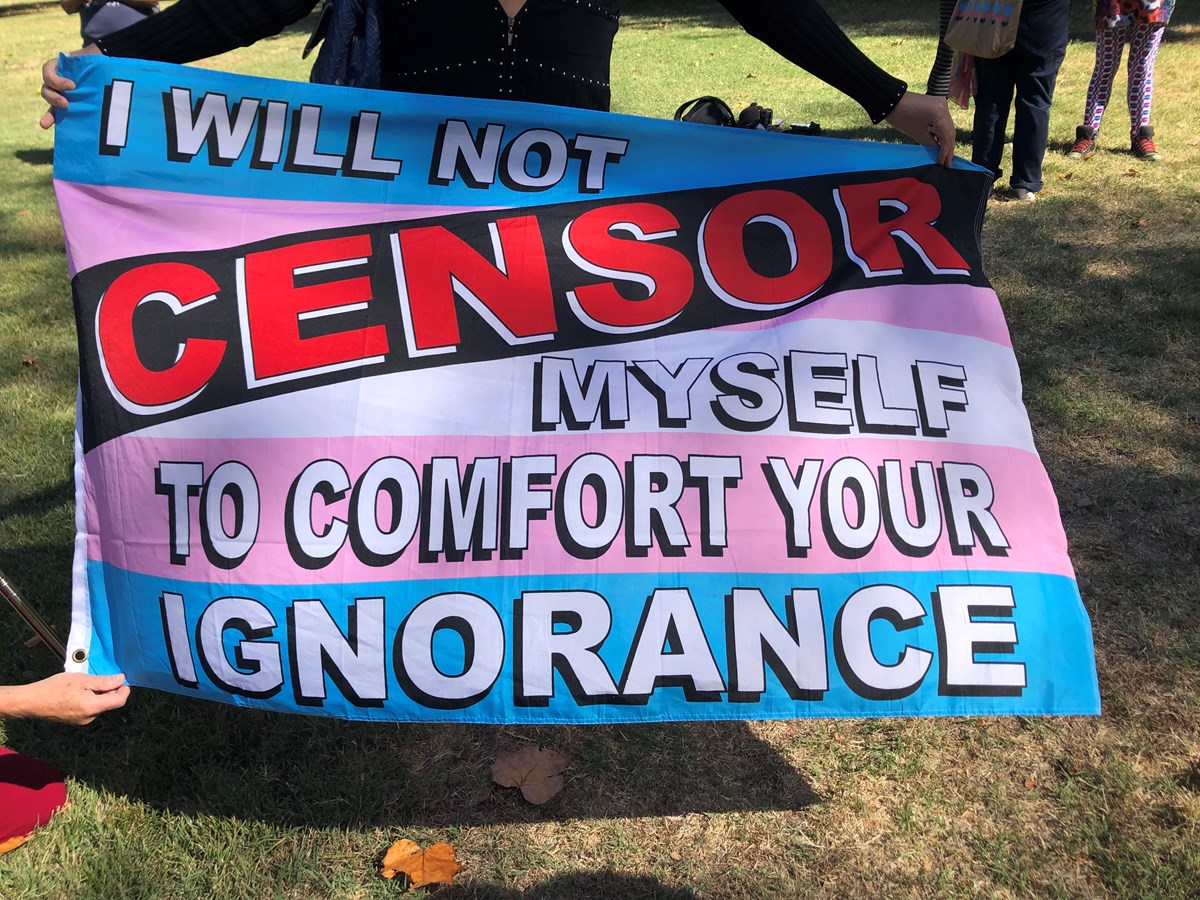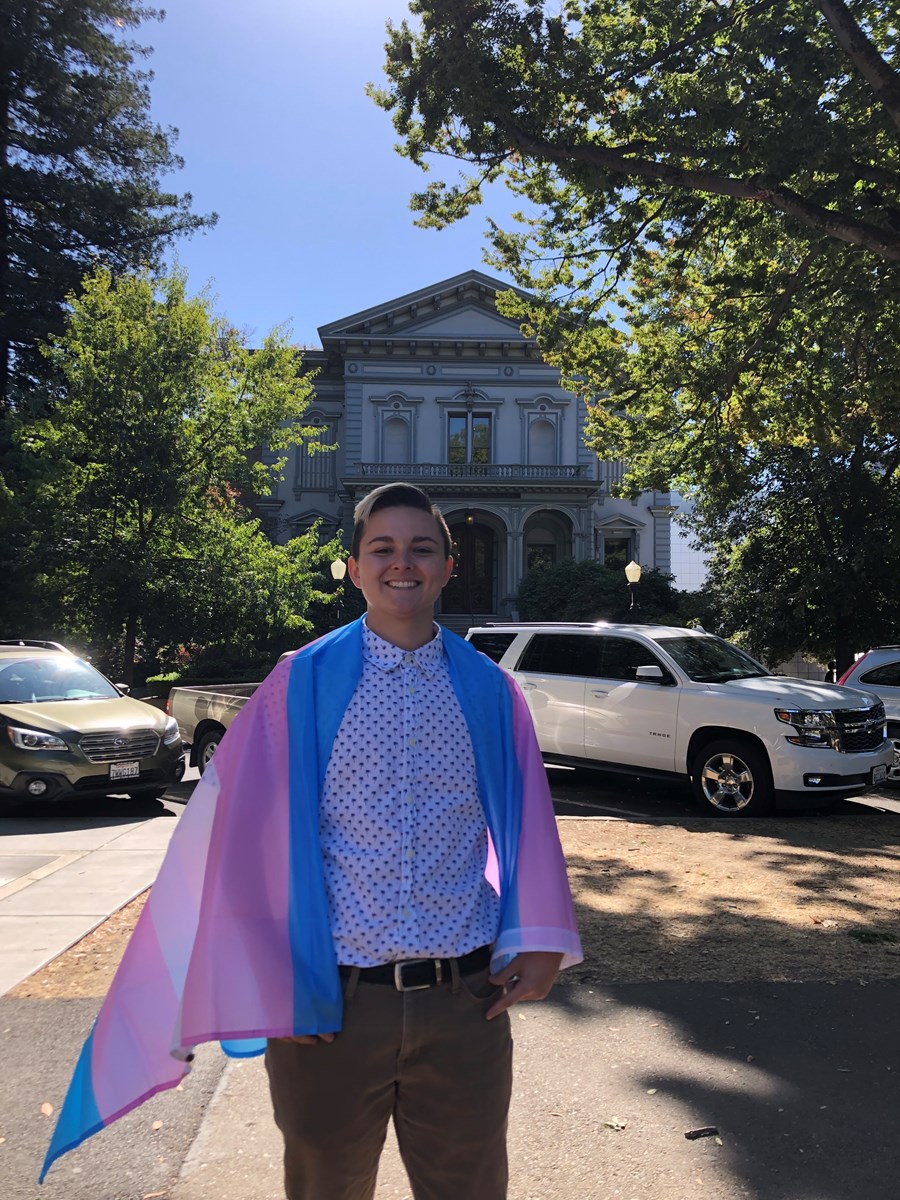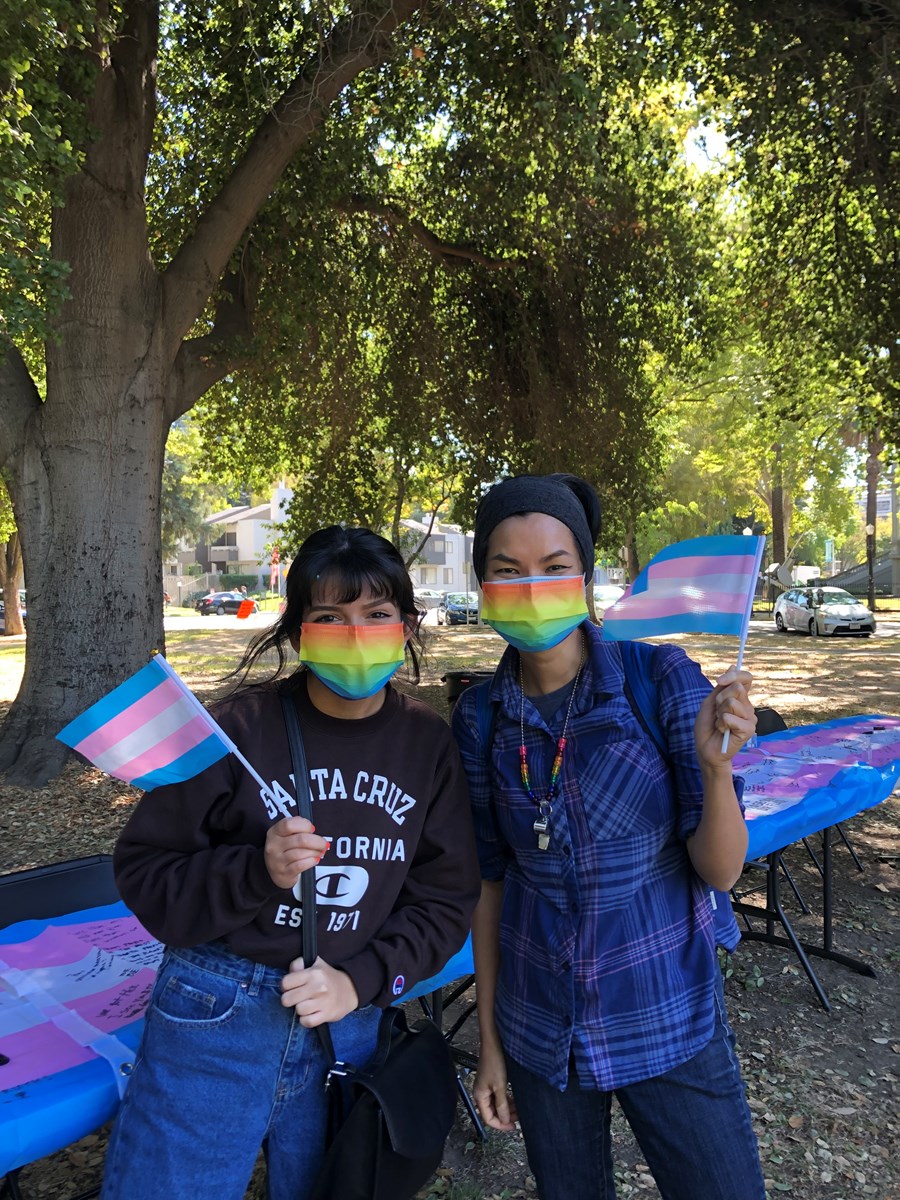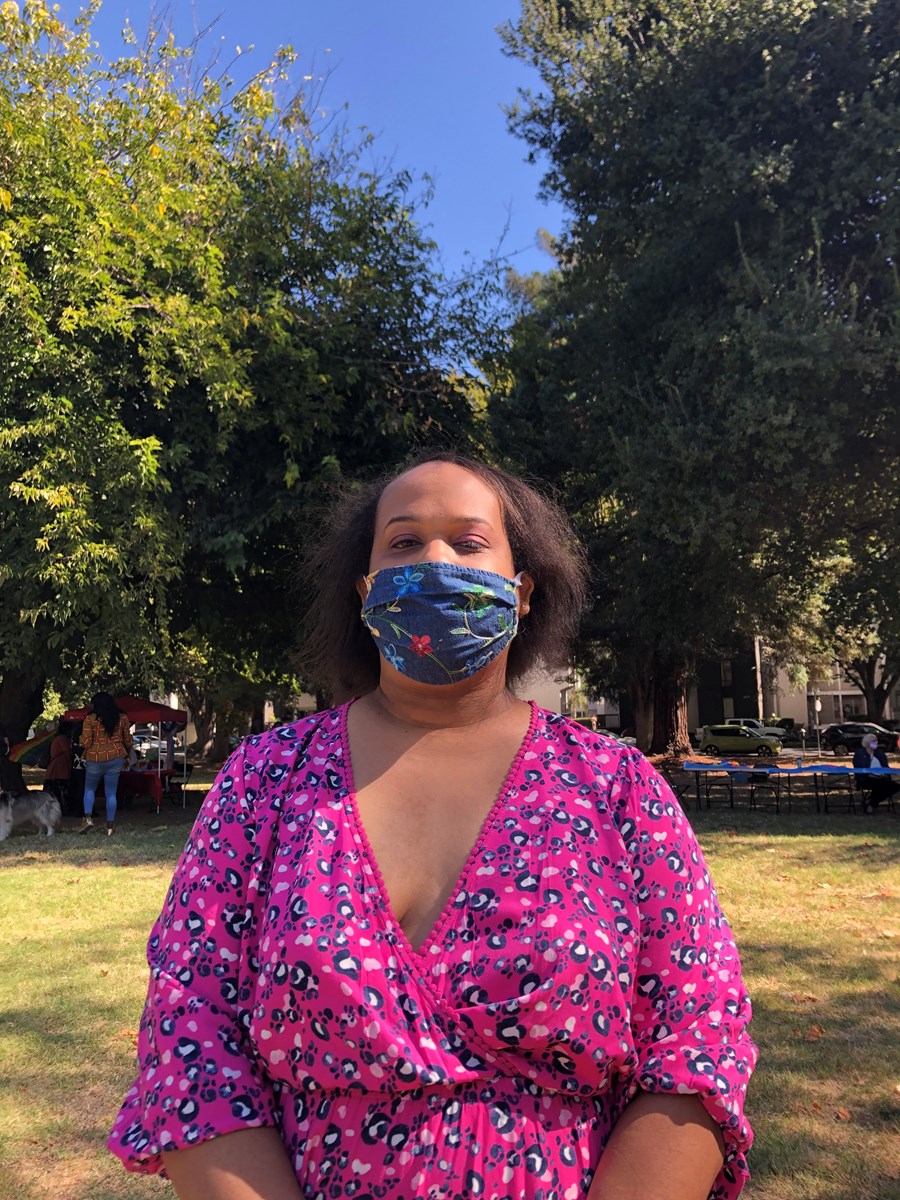Sasha Garden. Jane Doe. Selena Reyes-Hernandez.
Three of many transgender women killed.
The names hung in the air, announced by Ebony Harper, co-director of the Gender Health Center, before being echoed back by a crowd gathered in downtown Sacramento’s Crocker Park. Many wore pink, blue and white, the colors of the transgender flag. Garden, Doe and Reyes-Hernandez were just three of the names chanted to honor their memory and underscore continued violence against trans people, as part of the National Trans Visibility March on Saturday morning.
But the march didn’t carry that solemnity throughout. Spoken word performers commemorated the role of trans people in history and singers honored the friends who supported them after coming out. One singer said their songs were written with “such gay valor” that “you might eargasm,” which was met with loud cheers.
Over 100 people gathered in the park for the only West Coast event commemorating the third annual National Trans Visibility March, started to raise awareness around issues affecting trans and gender-nonconforming people.
 One marcher holds up a flag as a show of defiance to transphobia.Janelle Salanga / CapRadio
One marcher holds up a flag as a show of defiance to transphobia.Janelle Salanga / CapRadioThis year’s theme was “No Lives Left Behind,” focused on remembering and protesting transphobic violence toward trans and gender-nonconforming people. In 2020, over 37 trans people died from acts of violence against them, according to the Human Rights Campaign, which called it an “epidemic of violence.”
“Black and brown trans lives are further underserved populations — today is about honoring the folks we lost, and we still lose people today,” Lauren Pulido, who co-directs the Gender Health Center, said. “We need to be serving the people who are having more harm meet them, because if we aren’t serving them, we aren’t doing our job.”
Sacramento was chosen of one of five satellite cities, including Atlanta, Orlando, Washington, D.C., and New York, to collaborate with the march. The Sacramento LGBT Center, Trans and Queer Youth Collective, the Gender Health Center, the Transgender District in San Francisco and other community organizations provided support for the event.
Pulido, who served as the community engagement manager for the Sac LGBT Center while it was organizing the event, said that it was important that the march happened in Sacramento, instead of in hubs like San Francisco or Los Angeles, which are homes to several trans-specific spaces.
 Lauren Pulido, who helped bring the National Trans Visibility March to Sacramento, drapes a trans flag over their shoulders.Janelle Salanga / CapRadio
Lauren Pulido, who helped bring the National Trans Visibility March to Sacramento, drapes a trans flag over their shoulders.Janelle Salanga / CapRadio“There are trans people everywhere — on a farm in Yolo, in Redding, in Chico,” they said. “We want to meet more people where they are, especially those who live in more rural areas or who might not have community where they are. We want to show those people that they have visible support.”
Some came to the march to support a family member.
Others called the march a celebration, stressing its intersectionality and ability to make visible the history of trans and gender-nonconforming people.
Lenix Pecikonis is on the communications committee of the Lavender Library, where they help archive the history of trans and gender-nonconfirming people in Sacramento.
“The community has been around a long time,” they said. “I think, as someone who is an older millennial, we sometimes forget just how much our life experience now sort of sits on the shoulders of a bunch of folks who’ve come before us and who had to really fight for basic recognition and dignity, like we’re fighting for now.”
Tori Garcia, a senior at Sacramento State, saw the event as a way to recognize transgender rights, Black and brown rights and everyone in the LGBTQIA community.
 Tori Garcia, a senior at Sacramento State, holds up a trans flag next to Tran Pham, the interim coordinator at Sacramento State’s PRIDE Center.Janelle Salanga / CapRadio
Tori Garcia, a senior at Sacramento State, holds up a trans flag next to Tran Pham, the interim coordinator at Sacramento State’s PRIDE Center.Janelle Salanga / CapRadio“As a person who has struggled with my own identity, gender and sexuality, it’s important to come to these events, then we can honor the people who came before us, the people who are fighting for rights right now, the people who are struggling, who haven’t come out yet, and to everybody who’s just celebrating their lives and their own journeys and their paths,” they said.
Harper, who co-directs the Gender Health Center with Pulido, has been homeless and has considered ending her life. But she said her presence there was a testament that trans people were fighters and warriors, and that she not only represented her transness, but her Blackness.
“Usually they tell the story of how we got bitten by the shark, and how we got pulled under by the shark, but they don’t tell the story how we beat the hell out of the shark,” she said. “We are divine. We are unapologetic about who we are,” she said before leading the crowd in a Black Trans Lives Matter chant.
For some attendees, visibility meant dismantling the idea that the trans and gender non-conforming community was a monolith.
Niya Toni Watson said she wanted to come to the event to show a different narrative — that not all coming out stories were negative. She said that when she came out, she was surrounded by a big group of girls who told her what not to do and guided her through transition.
 Niya Toni Watson, who spent five years in Alabama, said she’s happy to be somewhere she doesn’t have to carry a gun.Janelle Salanga / CapRadio
Niya Toni Watson, who spent five years in Alabama, said she’s happy to be somewhere she doesn’t have to carry a gun.Janelle Salanga / CapRadio
“There’s a lot of people who see trans people and think, ‘Oh, they’ve lost their six-figure job,’ or that their family kicked them out,” she said. “But not all of us go through that. It’s not a monolithic experience.”
Pulido echoed that, noting that trans-specific spaces like the march were important to involve more people while making sure that trans people were leaders in their own care.
“Not every person is the same — there’s no one idea of a trans person or a trans community, no one way to be,” they said. “Each trans person is the narrator of our own experience and we should be.”
You can watch the virtual march, which compiles footage from the Sacramento, Orlando, Washington D.C., New York and Atlanta gatherings, here.








